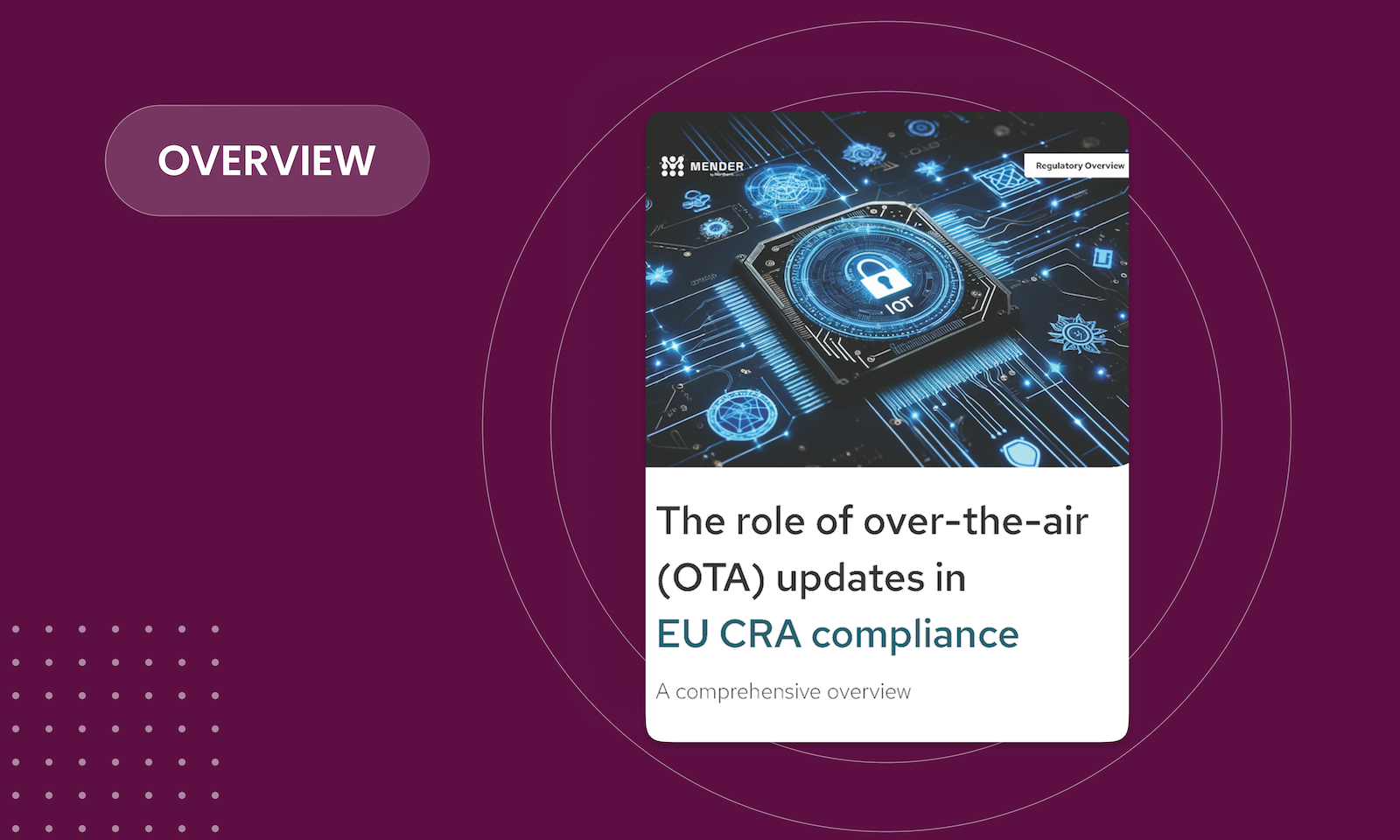Proactive strategies to overcome EU CRA compliance challenges
Meeting the multi-faceted requirements of the Cyber Resilience Act (CRA) is a demanding task for manufacturers. There are overlapping challenges in maintaining secure updates, compiling and updating a comprehensive SBOM, identifying vulnerabilities, remediating vulnerabilities, providing secure product updates, and ensuring a secure-by-default configuration. These elements do not exist in isolation.
Check out the rest of the series:
An effective security and compliance strategy requires a unified approach that considers their interplay. For instance, a robust OTA update infrastructure not only securely deploys software updates but can also automatically update the SBOM, support timely vulnerability remediation, and maintain a secure-by-default configuration. Without integration across these processes, manufacturers risk disjointed efforts that could compromise both compliance and security. Establishing security processes from the ground up can be daunting, especially for organizations without existing frameworks.
Navigating the complex requirements of the Cyber Resilience Act (CRA) calls for proactive strategies that account for all compliance elements holistically. Manufacturers need to design an effective infrastructure that seamlessly integrates secure software updates, SBOM management, vulnerability identification, and secure-by-default configurations. This infrastructure must be robust and agile enough to handle the evolving landscape of product security and the increasing scale of device fleets. While designing such an infrastructure is easier said than done, it is essential for sustaining long-term compliance and ensuring product security.
Proactive strategies for CRA compliance
The stringent and overarching requirements of the CRA demand a proactive approach to compliance, emphasizing security as a continuous journey rather than a one-time checklist. For manufacturers aiming to remain competitive in light of the legislation, adopting proactive strategies ensures compliance while further enhancing long-term resilience and trustworthiness of product offerings in the market. The following strategies are critical for long term success while proactively preparing for compliance with the CRA:
- Establish comprehensive security processes: An essential aspect of CRA compliance is the establishment of thorough security processes that span the entire product lifecycle. This includes compiling and tracking a comprehensive Software Bill of Materials (SBOM) to maintain transparency, ensuring timely deployment of security updates, and adhering to strict protocols for vulnerability disclosure and remediation. By maintaining a proactive stance on these elements, manufacturers can safeguard products to align with CRA mandates and remain ahead of any possible audits. Expanding this further, investments in automated tools that facilitate continuous monitoring of software vulnerabilities and streamline patch management ensure compliance from a technical standpoint. Additionally, fostering a culture of cybersecurity awareness across both technical and non-technical teams ensures that every stakeholder understands their role in operational security and cyber resilience. This approach will bolster defense while minimizing the risks associated with noncompliance.
- Integrate systems and processes for compliance: A siloed approach to compliance is inefficient and risky under the CRA’s complex legislation. Ensuring that all systems and processes are seamlessly integrated and secure is an essential aspect to maintain compliance with the CRA. This includes connecting tools for vulnerability management, timely update deployment, and compliance tracking to ensure a holistic view of the security landscape. By connecting these tools, organizations can mitigate operational risks and improve their ability to respond to emerging threats in a timely manner, satisfying an essential requirement of the CRA.
Furthermore, integration reduces the administrative burden of compliance by automating repetitive tasks, reducing the risk of human error in cumbersome compliance documentation. Automations also ensure that security data is accessible and secure, to enhance efficiency while positioning the entire organization to remain adaptable and compliant.
- Adopt a secure-by-default approach: The heart of the CRA is its emphasis on the importance of prioritizing security from the outset. Adopting a secure-by-default approach means automatically configuring products to meet high-security standards upon deployment and ensuring these configurations remain intact throughout the product lifecycle. This approach requires a robust foundation, including the implementation of a secure over-the-air (OTA) update mechanism to address vulnerabilities as they arise. Furthermore, security features like a secure first-boot process and rollbacks ensure product security follows the device lifecycle, while it sits in stock, and throughout the onset of any vulnerabilities. Proper proactive implementation of a secure-by-default approach must also extend beyond technical implementation and be embedded within the organizational mindset. Manufacturers should conduct regular security audits, simulate threat scenarios, and enforce rigorous testing protocols before and after product launch. Adopting a secure-by-default approach aligns with one of the CRA’s most important regulations while further building trust with customers, partners, and regulators to strengthen product security and overall public image while securing compliance.
Leveraging a professional OTA solution can significantly reduce compliance burdens, ensuring security and scalability throughout the lifecycle without overwhelming internal teams. By implementing a solution that integrates seamlessly with existing infrastructure, manufacturers can streamline updates, enhance security, and focus on innovation rather than the intricacies of regulatory compliance.
Further reading
Check out the other articles in our CRA compliance series:- An overview of EU Cyber Resilience Act (CRA) compliance [Part 1]
- The scope of EU Cyber Resilience Act (CRA) compliance [Part 2]
- Challenges in complying with the EU Cyber Resilience Act (CRA) [Part 3]
Recent articles
The struggle to reach global markets for medical device manufacturers: The importance of international compliance
The differences between the US FDA’s device approval process and the EU’s medical device regulation (MDR): An essential dual-compliance framework for global manufacturers
Why OTA updates are now mission critical for future-proofed device lifecycle management
Learn why leading companies choose Mender
Discover how Mender empowers both you and your customers with secure and reliable over-the-air updates for IoT devices. Focus on your product, and benefit from specialized OTA expertise and best practices.




